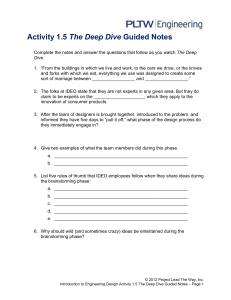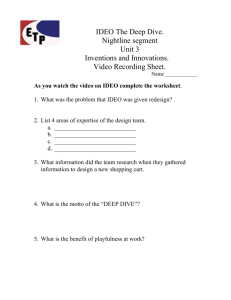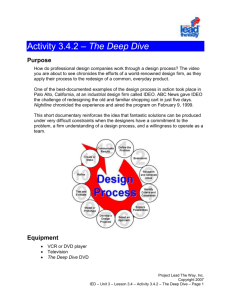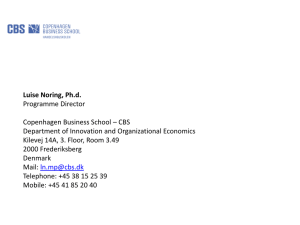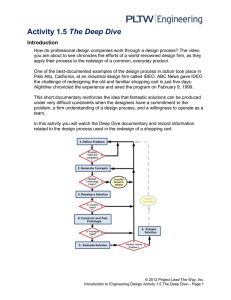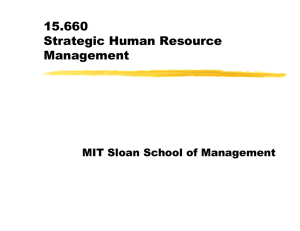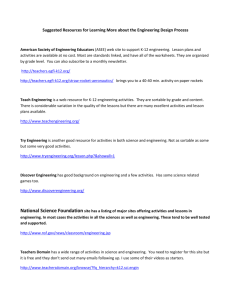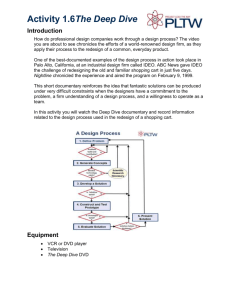November 10 – 11 2014 Leading: Relations and Collaborations
advertisement
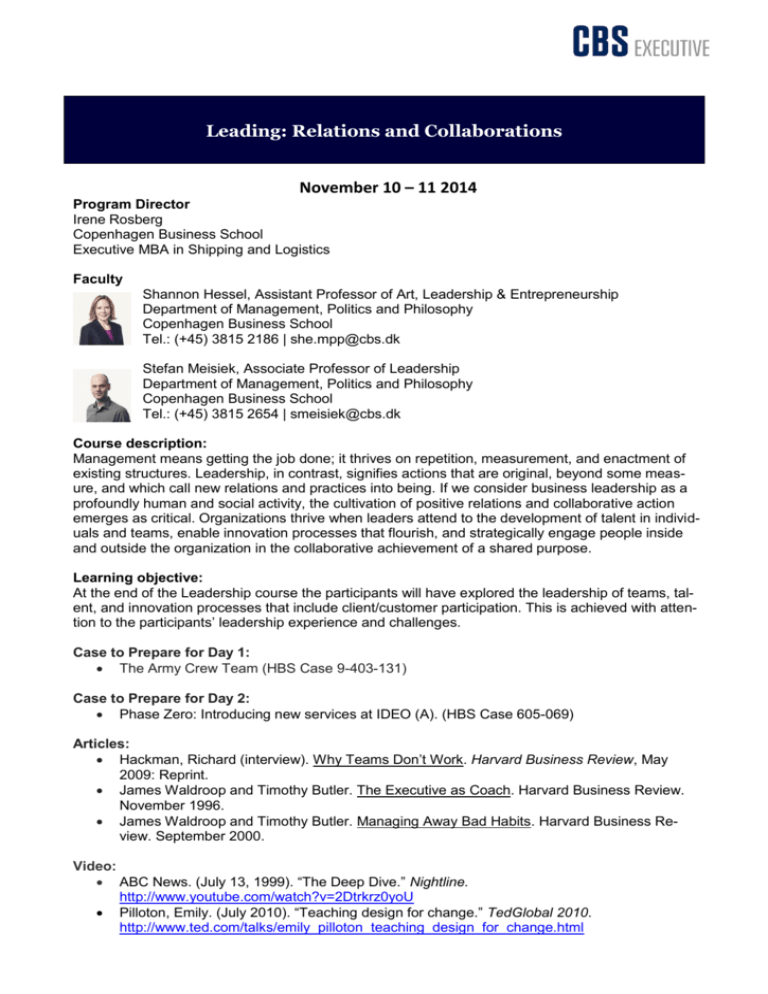
Leading: Relations and Collaborations November 10 – 11 2014 Program Director Module 1 - The World of the client and the Business Irene Rosberg Copenhagen Business School Executive MBA in Shipping and Logistics Faculty Shannon Hessel, Assistant Professor of Art, Leadership & Entrepreneurship Department of Management, Politics and Philosophy Copenhagen Business School Tel.: (+45) 3815 2186 | she.mpp@cbs.dk Stefan Meisiek, Associate Professor of Leadership Department of Management, Politics and Philosophy Copenhagen Business School Tel.: (+45) 3815 2654 | smeisiek@cbs.dk Course description: Management means getting the job done; it thrives on repetition, measurement, and enactment of existing structures. Leadership, in contrast, signifies actions that are original, beyond some measure, and which call new relations and practices into being. If we consider business leadership as a profoundly human and social activity, the cultivation of positive relations and collaborative action emerges as critical. Organizations thrive when leaders attend to the development of talent in individuals and teams, enable innovation processes that flourish, and strategically engage people inside and outside the organization in the collaborative achievement of a shared purpose. Learning objective: At the end of the Leadership course the participants will have explored the leadership of teams, talent, and innovation processes that include client/customer participation. This is achieved with attention to the participants’ leadership experience and challenges. Case to Prepare for Day 1: The Army Crew Team (HBS Case 9-403-131) Case to Prepare for Day 2: Phase Zero: Introducing new services at IDEO (A). (HBS Case 605-069) Articles: Hackman, Richard (interview). Why Teams Don’t Work. Harvard Business Review, May 2009: Reprint. James Waldroop and Timothy Butler. The Executive as Coach. Harvard Business Review. November 1996. James Waldroop and Timothy Butler. Managing Away Bad Habits. Harvard Business Review. September 2000. Video: ABC News. (July 13, 1999). “The Deep Dive.” Nightline. http://www.youtube.com/watch?v=2Dtrkrz0yoU Pilloton, Emily. (July 2010). “Teaching design for change.” TedGlobal 2010. http://www.ted.com/talks/emily_pilloton_teaching_design_for_change.html Session Plan November 10 – 11 2014 Monday, 10 November 2014 Tuesday, 11 November 2014 9:00-12:00 9:00-12:00 Welcome What: Leading Projects involving Client Collaboration How: Cases: Phase Zero (IDEO), Project H, and other examples. View: “Teaching Design for Change” What: Team Leadership How: Case: The Army Crew Read: Why Teams don’t Work Break Break Continued Continued 12:00-13:00 Lunch 12:00-13:00 Lunch 13:00-17:30 13:00-17:30 What: Leading Collaborative Innovation Efforts How: Cases: IDEO, Fostering Innovation at Santa Monica Aerospace, and other examples. View: “The Deep Dive” What: Coaching/Developing Talent Read: The Executive as Coach & Managing Away Bad Habits Break Break Continued Continued
